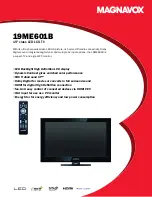
21
score the area by using a utility knife to trace your line before cutting.
Be sure to save the piece you just cut out
—
you can use it to patch the hole if you ever decide
to remove the speaker.
See Photo #2
4.
When your hole has been cut, you may be able to use this newly found access to help run your wires.
Once your wire is in place, connect it to the speaker. This would be a good time to test your speaker by
playing something through it to make sure your wire and speaker
are in working order before you place it in the wall.
5.
Place the speaker into the hole, making sure there are no gaps
between the wall and the speaker. These spaces look bad and they
will decrease your sound quality. Take care to ensure your speaker
is not touching anything inside the wall or ceiling and that the drywall
shows no signs of bending or sagging.
See Photo #3
Mounting Recessed Speakers: In-Wall and In-Ceiling
6.
There are a few different ways of securing a recessed speaker, which vary by manufacturer. The
manual for your speakers will give you detailed instructions on how your speakers are secured. There
will be multiple screws you will need to tighten, so be sure you have them all secured.
TECHTIP:
If you tighten all the screws on one side first, or
too far, it will "angle" the speaker and make the opposite
side almost impossible to attach without risking harm to
the drywall. Lightly tighten the screws all around when the
speaker is flush with the drywall.
7.
Before you fully tighten your speakers into place, use your tape
measure and level to make sure you have it positioned exactly the
way you want it.
See Photo #4
TECHTIP:
Keep in mind that even though the speaker
may be level, a bookcase or anything else in the room
that is not level can make a level speaker look crooked. Have someone stand back as you hold it
to make sure it looks good with the rest of the room.
8.
Once you have tightened your speaker into place, the last step is to insert the grille that came with
your speaker. This is a decorative cover that conceals the components of the speaker itself. These
grilles are usually a very tight fit and can bend if not inserted carefully. Start with one side of the grille
and work it into the groove without forcing it. They are a very precise fit, and any creases will be very
noticeable if you end up forcing it, so take your time.
If you've made it to this point, congratulations on a job well done!
















































